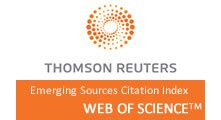The Role of Student Employment in Persistence and Efficiency in STEM Higher Education
1451
684
Abstract
The high dropout ratios that characterize STEM fields can be explained by several factors, one of which is the employment of students during their studies. Our research aims to explore the impact of student employment on persistence and academic performance in STEM fields. During our research, we used the data of the Hungarian subsample of the PERSIST 2019 database (N=1045). According to our results, IT trainings are more resistant to the negative effects of employment than other trainings, as students working in this field did not differ from their non-employed peers in terms of either persistence or academic progress. Concerning the science, engineering, and non-STEM training, employment had a significant negative effect on academic performance, but it was primarily compensated by being employed in study-related jobs in science training, which also had a favorable effect in non-STEM training courses. However, in the field of engineering, employment in the profession reinforced this adverse effect too. In the field of informatics, study-related work also had a negative impact. Based on our results, we think it is worth considering the broader spread of dual training courses in higher education, during which students can complete an internship at a company or partner organization in addition to theoretical training.
Keywords
Student employment, STEM education, Persistence, Academic performance
Full Text:
PDFReferences
Kocsis, Z., Alter, E., & Pusztai, G. (2022). The role of student employment in persistence and efficiency in STEM higher education. International Journal of Education in Mathematics, Science, and Technology (IJEMST), 10(4), 831-848. https://doi.org/10.46328/ijemst.2177
DOI: https://doi.org/10.46328/ijemst.2177
Refbacks
- There are currently no refbacks.
Copyright (c) 2022 International Journal of Education in Mathematics, Science and Technology







International Journal of Education in Mathematics, Science and Technology (IJEMST)

This work is licensed under a Creative Commons Attribution-NonCommercial-ShareAlike 4.0 International License.
ISSN: 2147-611X (Online)
